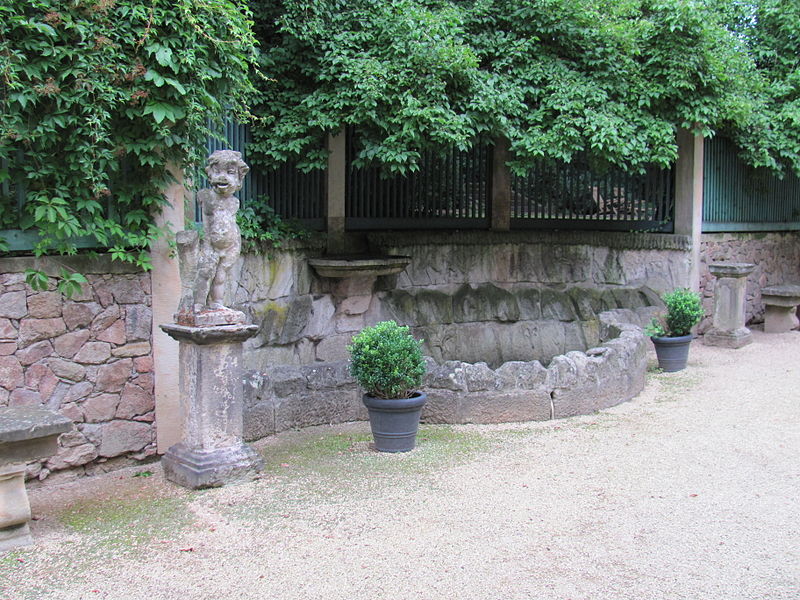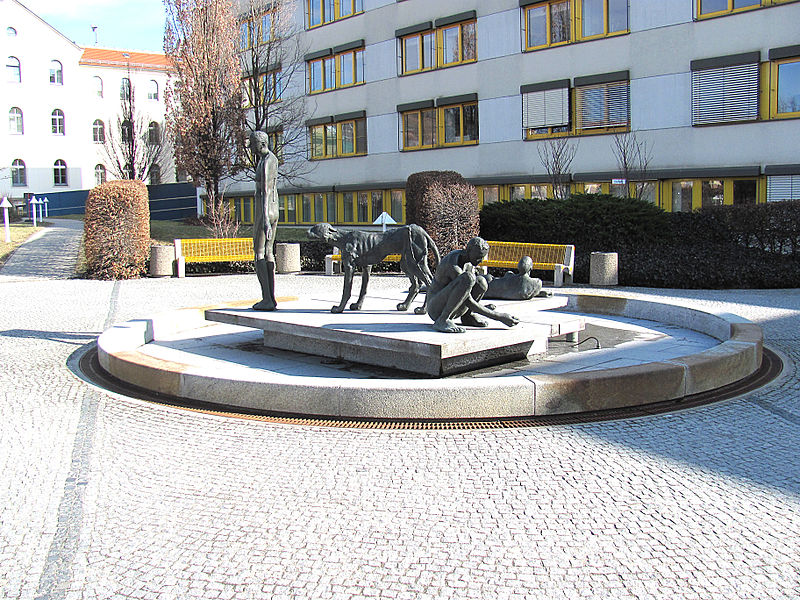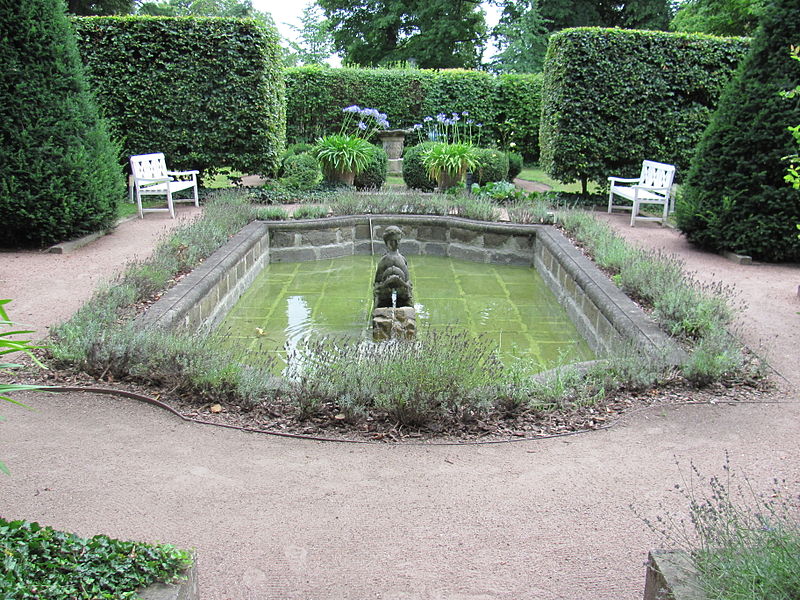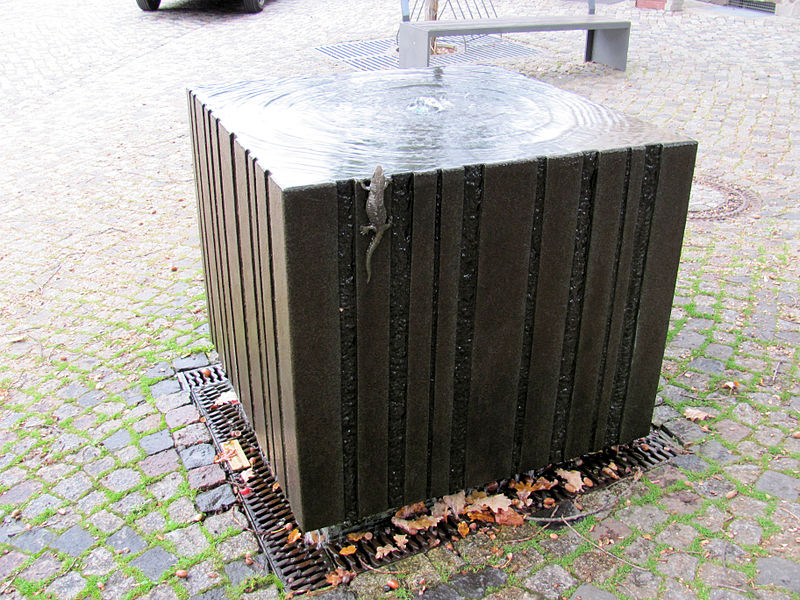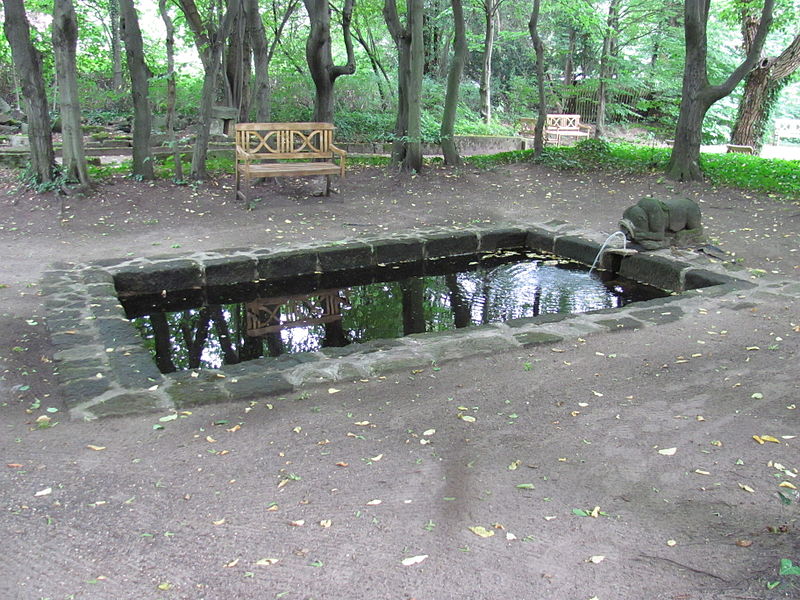Brunnenskulptur „…gegen den Strom…“, Radebeul
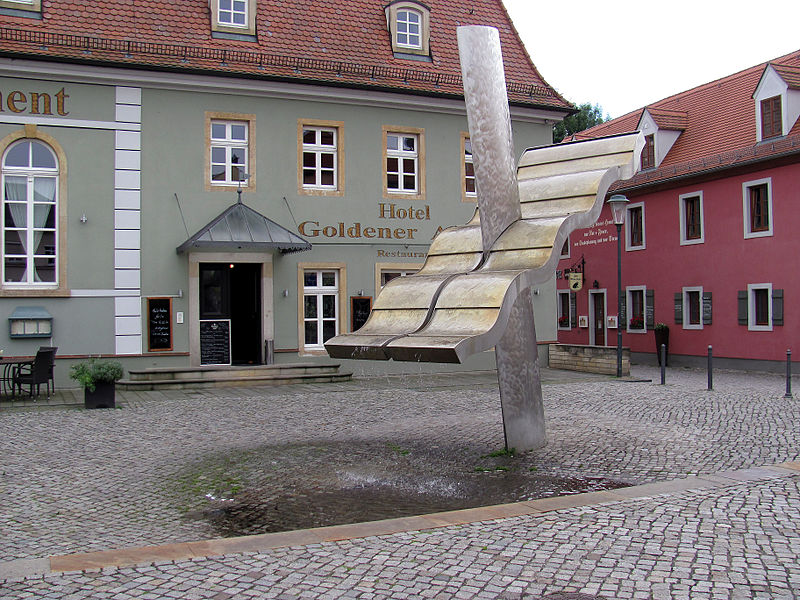
Facts and practical information
The list of fountains and water features in Radebeul gives an overview of fountains and water features in the Saxon city of Radebeul. Some of the installations are now listed as small architecture.
While many of the farmsteads in the village locations of the Lößnitz villages had their own wells, there were community-owned wells in the village centers, especially for the cottagers, of which the well rediscovered and restored in 1996 on the Anger Altnaundorf bears witness. Whether this also applied to the village center of Serkowitz would have to be clarified, since there the Lößnitzbach stream flowed directly over the Anger on its way to the Elbe. A sinking groundwater level and the increased water consumption in the 18th and 19th centuries associated with the growth of the population ensured that the application for a building permit for a villa was often accompanied by an application and approval for the sinking or drilling of a well. Many of these deep wells, which were then filled in or covered after the construction of the tap water supply in the 1920s, were rediscovered after the fall of the Wall and are now used in part for garden irrigation using service water.
The Radebeul wineries, most of which were located below the Lößnitz plateau, had their own water supply. Where dug wells were no longer appropriate because of the great depth to the aquifer, run-of-river wells with enclosed slope springs were used because of the mountainous location. In the higher-lying terrain, springs were captured and their water was then conducted via ditches and through breakthroughs through slope edges to well houses located in the courtyard of the estates. Since the 17th century, tubing has also been used in some cases, the best-known of which was the wooden Straken water pipe to Hoflößnitz, which was put into operation in 1625 and initially had twelve water-fee riparians. Pipe lines also led to the Minckwitz vineyard, since about 1770 from Stephansborn to Wackerbarths Ruh' and since about 1820 from Schwarzes Teich to the courtyard of Altfriedstein.
With the development of today's villa quarters of the Loessnitz also came the desire for simpler water supply as well as for water as an ornamental element. In 1867/68, the Ziller brothers built a first iron fall water pipeline from the elevated Wahnsdorf. But it was not until they built the Ziller waterworks in the first half of the 1870s that they were able to connect the new housing quarters with pressurized water pipes. Thus, in order to make the villas more attractive to the clientele, numerous properties with ornamental fountains were built, some of which still exist today. Several of these are also listed as part of the listed estates themselves; these are listed in the subchapter Listed ornamental fountains and water features in private spaces. But the Ziller brothers in particular did not stop at the private property line. Public fountain installations were not only intended to beautify residential neighborhoods, but also to knock down dust from the only partially paved streets and sidewalks via air humidification. Of the such installations on the Zillerplatz, the two Königplätzen in Oberlößnitz and Niederlößnitz as well as on the traffic circle of the then Albertstraße, only the latter remained, which today bubbles up again as the Fontainenplatz.
After reunification, a number of ornamental fountains and water features were newly created in Radebeul in addition to the historic water features in publicly accessible spaces.
Radebeul
Brunnenskulptur „…gegen den Strom…“ – popular in the area (distance from the attraction)
Nearby attractions include: Schloss Wackerbarth, Altkötzschenbroda, Heimatstube Kötzschenbroda, Church of Peace.
Frequently Asked Questions (FAQ)
Which popular attractions are close to Brunnenskulptur „…gegen den Strom…“?
How to get to Brunnenskulptur „…gegen den Strom…“ by public transport?
Bus
- S-Bahnhof Kötzschenbroda • Lines: 400 (5 min walk)
- Radebeul Oscar-Pletsch-Straße • Lines: 475 (5 min walk)
Train
- Radebeul-Kötzschenbroda (5 min walk)
- Radebeul-Zitzschewig (30 min walk)
Tram
- Radebeul, Moritzburger Straße • Lines: 4 (7 min walk)


